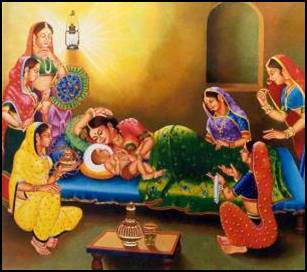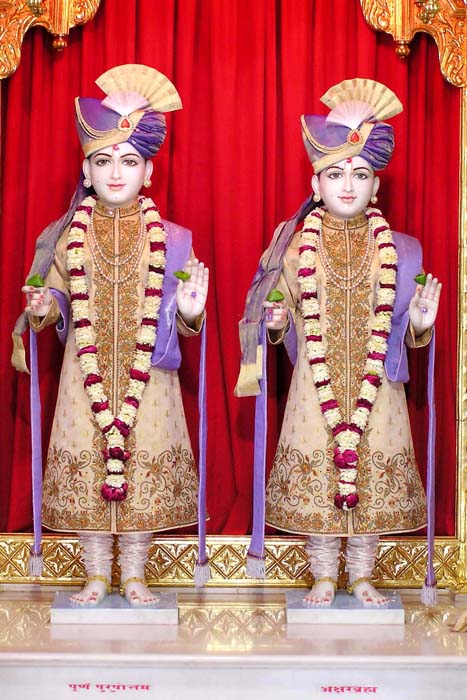|
Jivatma
''Jiva'' ( sa, जीव, IAST: ) is a living being or any entity imbued with a life force in Hinduism and Jainism. The word itself originates from the Sanskrit verb-root ''jīv'', which translates as 'to breathe' or 'to live'. The ''jiva'', as a metaphysical entity, has been described in various scriptures such as the Bhagavad Gita and the Upanishads. Each subschool of Vedanta describes the role of the ''jiva'' with the other metaphysical entities in varying capacities. Described in the scriptures A common metaphysical entity discussed in the scriptures (such as the Bhagavad Gita, Upanishad and Vachanamrut) in the seven schools of Vedanta is the ''jiva'' or ''atman'': the soul or self. Bhagavad Gita Chapter 2 of the Bhagavad Gita contains verses describing the ''jiva''. For example, the ''jiva'' is described as eternal and indestructible in chapter 2, verse 20: Upanishads बालाग्रशतभागस्य शतधा कल्पितस्य च । ... [...More Info...] [...Related Items...] OR: [Wikipedia] [Google] [Baidu] |
Paramatma
''Paramatman'' (Sanskrit: परमात्मन्, IAST: Paramātman) or ''Paramātmā'' is the Absolute ''Atman'', or supreme Self, in various philosophies such as the Vedanta and Yoga schools in Hindu theology, as well as other Indian religions like Sikhism. ''Paramatman'' is the "Primordial Self" or the "Self Beyond" who is spiritually identical with the absolute and ultimate reality. Selflessness is the attribute of ''Paramatman'', where all personality/individuality vanishes. Etymology The word stem ''paramātman'' (परमात्मन्, pronounced , its nominative singular being ''paramātmā'' — परमात्मा, pronounced ) is formed from two words, ''parama'', meaning "supreme" or "highest", and ''ātma'', which means individual self. The word '' Ātman'' generally denotes the Individual Self, but by the word ''Paramatman'' which word also expresses Boundless Life, Boundless Consciousness, Boundless Substance in Boundless Space, is meant the ''At ... [...More Info...] [...Related Items...] OR: [Wikipedia] [Google] [Baidu] |
Vedanta
''Vedanta'' (; sa, वेदान्त, ), also ''Uttara Mīmāṃsā'', is one of the six (''āstika'') schools of Hindu philosophy. Literally meaning "end of the Vedas", Vedanta reflects ideas that emerged from, or were aligned with, the speculations and philosophies contained in the Upanishads, specifically, knowledge and liberation. Vedanta contains many sub-traditions, all of which are based on a common group of texts called the "Three Sources" (''prasthānatrayī''): '' the Upanishads'', the '' Brahma Sutras'' and the ''Bhagavad Gita The Bhagavad Gita (; sa, श्रीमद्भगवद्गीता, lit=The Song by God, translit=śrīmadbhagavadgītā;), often referred to as the Gita (), is a 700-verse Hindu scripture that is part of the epic '' Mahabharata'' (c ...''. All Vedanta traditions contain extensive discussions on ontology, soteriology and epistemology, though there is much disagreement among the various schools. The main traditions of ... [...More Info...] [...Related Items...] OR: [Wikipedia] [Google] [Baidu] |
Advaita Vedanta
''Advaita Vedanta'' (; sa, अद्वैत वेदान्त, ) is a Hindu sādhanā, a path of spiritual discipline and experience, and the oldest extant tradition of the orthodox Hindu school Vedānta. The term ''Advaita'' (literally "non-secondness", but usually rendered as "nondualism", and often equated with monism) refers to the idea that '' Brahman'' alone is ultimately real, while the transient phenomenal world is an illusory appearance ('' maya'') of Brahman. In this view, (''jiv) Ātman'', the experiencing self, and ''Ātman-Brahman'', the highest Self and Absolute Reality, is non-different. The ''jivatman'' or individual self is a mere reflection or limitation of singular ''Ātman'' in a multitude of apparent individual bodies. In the Advaita tradition, '' moksha'' (liberation from suffering and rebirth) is attained through recognizing this illusoriness of the phenomenal world and disidentification from the body-mind complex and the notion of 'd ... [...More Info...] [...Related Items...] OR: [Wikipedia] [Google] [Baidu] |
Swaminarayan
Swaminarayan ( IAST: ', 3 April 1781 – 1 June 1830), also known as Sahajanand Swami, was a yogi and ascetic, who is believed by followers to be a manifestation of God Krishna, or as the highest manifestation of Purushottam, and around whom the Swaminarayan Sampradaya developed. In 1800, he was initiated into the ''Uddhav'' ''sampradaya'' by his guru, Swami Ramanand, and was given the name Sahajanand Swami. Despite opposition, in 1802 Ramanand handed over the leadership of the Uddhav Sampraday to him before his death. According to the Swaminarayan-tradition, Sahajanand Swami became known as Swaminarayan, and the Uddhav Sampraday as the Swaminarayan Sampradaya, after a gathering in which he taught the Swaminarayan Mantra to his followers. He emphasized "moral, personal, and social betterment," and ''ahimsa'', and is also remembered within the sect for undertaking reforms for women and the poor, and performing non-violent yajñas (fire sacrifices) on a large scale. ... [...More Info...] [...Related Items...] OR: [Wikipedia] [Google] [Baidu] |
Predestination
Predestination, in theology, is the doctrine that all events have been willed by God, usually with reference to the eventual fate of the individual soul. Explanations of predestination often seek to address the paradox of free will, whereby God's omniscience seems incompatible with human free will. In this usage, predestination can be regarded as a form of religious determinism; and usually predeterminism, also known as theological determinism. History Pre-Christian period Some have argued that the Book of Enoch contains a deterministic worldview that is combined with dualism. The book of Jubilees seems to harmonize or mix together a doctrine of free will and determinism. Ben Sira affirms free will, where God allows a choice of bad or good before the human and thus they can choose which one to follow. New Testament period There is some disagreement among scholars regarding the views on predestination of first-century AD Judaism, out of which Christianity came. ... [...More Info...] [...Related Items...] OR: [Wikipedia] [Google] [Baidu] |
Vishishtadvaita
Vishishtadvaita ( IAST '; sa, विशिष्टाद्वैत) is one of the most popular schools of the Vedanta school of Hindu philosophy. Vedanta literally means the in depth meaning ''of the Vedas.'' ''Vishisht Advaita'' (literally "Advaita means non- Duality") is a non-dualistic school of Vedanta philosophy. It is non-dualism of the qualified whole, in which Brahman alone is seen as the Supreme Reality, but is characterized by multiplicity. It can be described as qualified monism or qualified non-dualism or attributive monism. It is a school of Vedanta philosophy which believes in all diversity subsuming to an underlying unity. Ramanuja, the 11–12th century philosopher and the main proponent of Vishishtadvaita philosophy contends that the Prasthanatrayi ("The three courses"), namely the Upanishads, the Bhagavad Gita, and the Brahma Sutras are to be interpreted in a way that shows this unity in diversity, for any other way would violate their consistency. ... [...More Info...] [...Related Items...] OR: [Wikipedia] [Google] [Baidu] |
Ramanuja
Ramanuja (Middle Tamil: Rāmāṉujam; Classical Sanskrit: Rāmanuja; 1017 CE – 1137 CE; ; ), also known as Ramanujacharya, was an Indian Hindu philosopher, guru and a social reformer. He is noted to be one of the most important exponents of the Sri Vaishnavism tradition within Hinduism. His philosophical foundations for devotionalism were influential to the Bhakti movement. Ramanuja's guru was Yādava Prakāśa, a scholar who according to tradition belonged to the Advaita Vedānta tradition, but probably was a Bhedabheda scholar. Sri Vaishnava tradition holds that Ramanuja disagreed with his guru and the non-dualistic Advaita Vedānta, and instead followed in the footsteps of Tamil Alvārs tradition, the scholars Nāthamuni and Yamunāchārya. Ramanuja is famous as the chief proponent of Vishishtadvaita subschool of Vedānta, and his disciples were likely authors of texts such as the Shatyayaniya Upanishad. Ramanuja himself wrote influential texts, such as bhāsya on t ... [...More Info...] [...Related Items...] OR: [Wikipedia] [Google] [Baidu] |
Akshar-Purushottam Darshan
Akshar-Purushottam Darshan (''Akṣara-Puruṣottama Darśana'') or Aksarabrahma-Parabrahma-Darsanam, "Akshar-Purushottam philosophy," is a designation used by BAPS-swamis as an alternative name for the Swaminarayan Darshana, Swaminarayan's view or teachings, to distinguish it from other Vedanta-traditions. It is based on Swaminarayan's distinction between Parabrahman (Purushottam, Narayana) and Aksharbrahman as two distinct eternal realities, which in this view sets Swaminarayan's teachings apart from other Vedanta-traditions. It is an essential element for the BAPS and it's ''Akṣara-Puruṣottama Upāsanā'' ( "worship"),Swaminarayan sanshtaWorship of God with the Guru - Akshar Purushottam Philosophy/ref> in which Purushottam c.q. Parabrahman is present in a lineage of Aksharbrahman guru's, who are the abode (''akshar'') of God. Meaning In Swaminarayan theology, a distinction is made between Para Brahman, the highest Brahman which is Purushottam Narayan (God), who is r ... [...More Info...] [...Related Items...] OR: [Wikipedia] [Google] [Baidu] |
IAST
The International Alphabet of Sanskrit Transliteration (IAST) is a transliteration scheme that allows the lossless romanisation of Indic scripts as employed by Sanskrit and related Indic languages. It is based on a scheme that emerged during the nineteenth century from suggestions by Charles Trevelyan, William Jones, Monier Monier-Williams and other scholars, and formalised by the Transliteration Committee of the Geneva Oriental Congress, in September 1894. IAST makes it possible for the reader to read the Indic text unambiguously, exactly as if it were in the original Indic script. It is this faithfulness to the original scripts that accounts for its continuing popularity amongst scholars. Usage Scholars commonly use IAST in publications that cite textual material in Sanskrit, Pāḷi and other classical Indian languages. IAST is also used for major e-text repositories such as SARIT, Muktabodha, GRETIL, and sanskritdocuments.org. The IAST scheme represents more than ... [...More Info...] [...Related Items...] OR: [Wikipedia] [Google] [Baidu] |
BAPS
Bochasanwasi Akshar Purushottam Swaminarayan Sanstha (BAPS; ) is a Hindu denomination within the Swaminarayan Sampradaya. It was formed in 1905 by Yagnapurushdas (Shastriji Maharaj) following his conviction that Swaminarayan remained present on earth through a lineage of gurus starting with Gunatitanand Swami. Since 1971, under the leadership of Pramukh Swami Maharaj, the BAPS has grown strongly. As of 2019, BAPS has 44 shikharbaddha mandirs and more than 1,200 mandirs worldwide that facilitate practice of this doctrine by allowing followers to offer devotion to the murtis of Swaminarayan, Gunatitanand Swami, and their successors. BAPS mandirs also feature activities to foster culture and youth development. Many devotees view the mandir as a place for transmission of Hindu values and their incorporation into daily routines, family life, and careers. BAPS also engages in a host of humanitarian and charitable endeavors through BAPS Charities, a separate non-profit aid organisati ... [...More Info...] [...Related Items...] OR: [Wikipedia] [Google] [Baidu] |
Dvaita Vedanta
Dvaita Vedanta (); (originally known as Tattvavada; IAST:Tattvavāda), is a sub-school in the Vedanta tradition of Hindu philosophy. The term Tattvavada literally means "arguments from a realist viewpoint". The Tattvavada (Dvaita) Vedanta sub-school was founded by the 13th-century philosopher-saint Madhvacharya. Madhvacharya believed in three entities - God, ''jiva'' (soul), and ''jada'' (''maya'', matter). The Dvaita Vedanta school believes that God and the individual souls ( jīvātman) exist as independent realities, and these are distinct, being said that Vishnu (Narayana) is independent (''svatantra''), and souls are dependent (''paratantra'') on him. The Dvaita school contrasts with the other two major sub-schools of Vedanta, the Advaita Vedanta of Adi Shankara which posits nondualism – that ultimate reality ( Brahman) and human soul ( Ātman) are identical and all reality is interconnected oneness, and Vishishtadvaita of Ramanuja which posits qualified nondualism ... [...More Info...] [...Related Items...] OR: [Wikipedia] [Google] [Baidu] |
Consciousness
Consciousness, at its simplest, is sentience and awareness of internal and external existence. However, the lack of definitions has led to millennia of analyses, explanations and debates by philosophers, theologians, linguisticians, and scientists. Opinions differ about what exactly needs to be studied or even considered consciousness. In some explanations, it is synonymous with the mind, and at other times, an aspect of mind. In the past, it was one's "inner life", the world of introspection, of private thought, imagination and volition. Today, it often includes any kind of cognition, experience, feeling or perception. It may be awareness, awareness of awareness, or self-awareness either continuously changing or not. The disparate range of research, notions and speculations raises a curiosity about whether the right questions are being asked. Examples of the range of descriptions, definitions or explanations are: simple wakefulness, one's sense of selfhood or soul ... [...More Info...] [...Related Items...] OR: [Wikipedia] [Google] [Baidu] |









